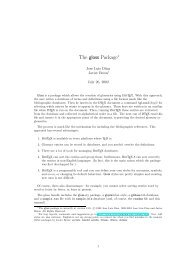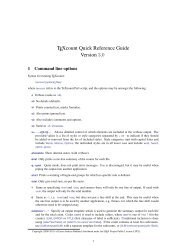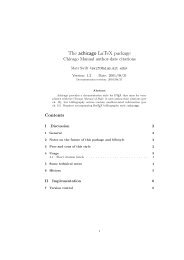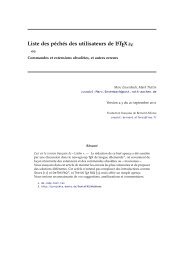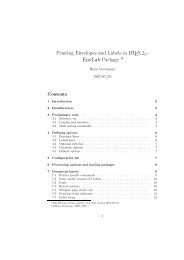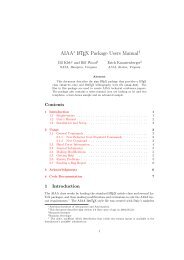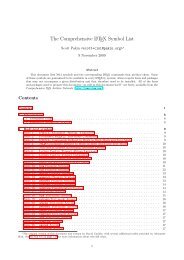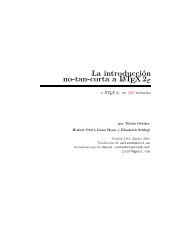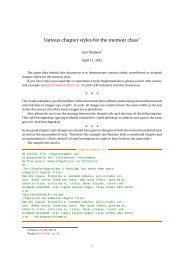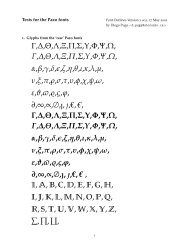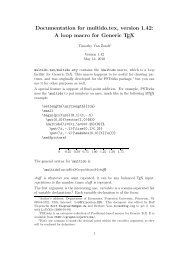Create successful ePaper yourself
Turn your PDF publications into a flip-book with our unique Google optimized e-Paper software.
Thehfactor parameter indicates how align operands. The default value,right, gives a raggedleft alignment. Thedecimal value gives an alignmenton dot.source\opmul{3.1416}{12.8}\qquad\opmul[hfactor=decimal]{3.1416}{12.8}3.1 4 1 6×1 2.82 5 1 3 2 86 2 8 3 23 1 4 1 64 0.2 1 2 4 83.1 4 1 6×1 2.82 5 1 3 2 86 2 8 3 23 1 4 1 64 0.2 1 2 4 8For displayed multiplication, thedeletezero parameter is only for operands.The result keeps its non-significant zeros since there are necessary in orderto make a correct dot shifting when we work “by hand”.source\opmul[deletezero=false]{01.44}{25}\qquad\opmul{01.44}{25}0 1.4 4×2 50 7 2 00 2 8 80 3 6.0 01.4 4×2 57 2 02 8 83 6.0 0In the other hand, this parameter has its usual behaviour in inline multiplication.source\opmul[deletezero=false,style=text]{01.44}{25}\qquad\opmul[style=text]{01.44}{25}01.44×25=036.00 1.44×25=363.4 DivisionThe <strong>xlop</strong> package deals with “normal” division via \opdiv macro and witheuclidean division via \opidiv macro. Division is a very complex operationso it is not strange that there are many parameters to control it.Pay attention that the <strong>xlop</strong> package v. 0.25 is unable to deal with “english”division. In this package version, the division is the “french” one,which is more or less used as it in some other countries. The <strong>xlop</strong> packagev. 0.3 will allow “enlish” division (and many more feautures).17



